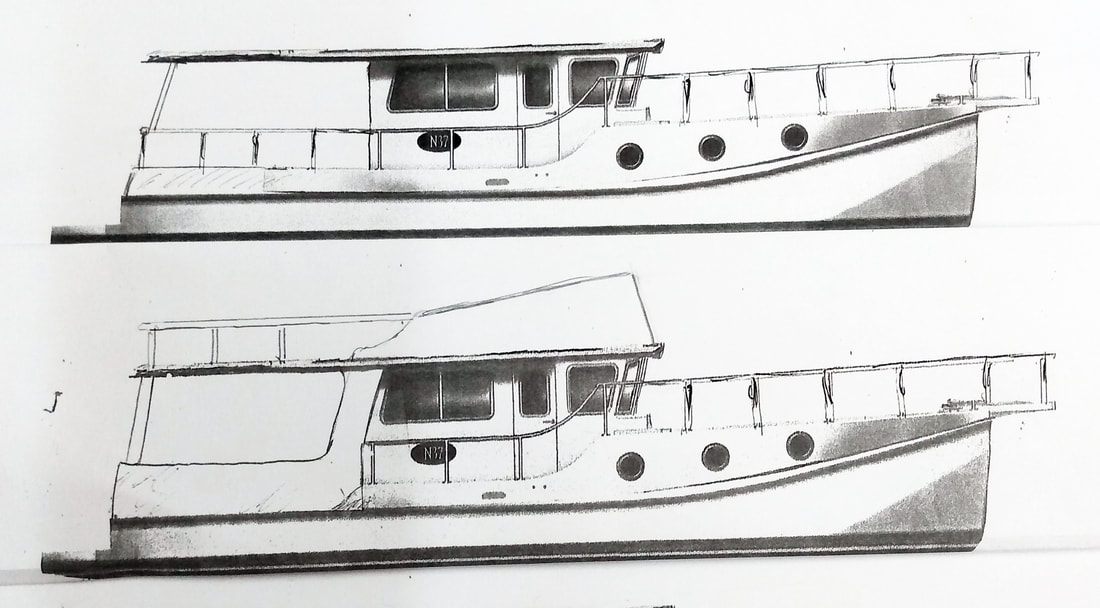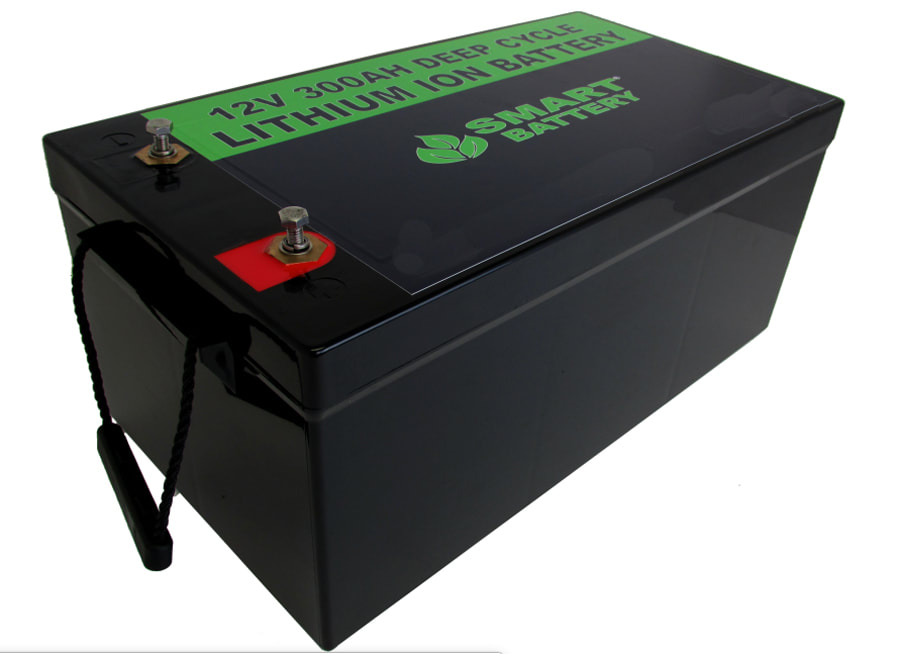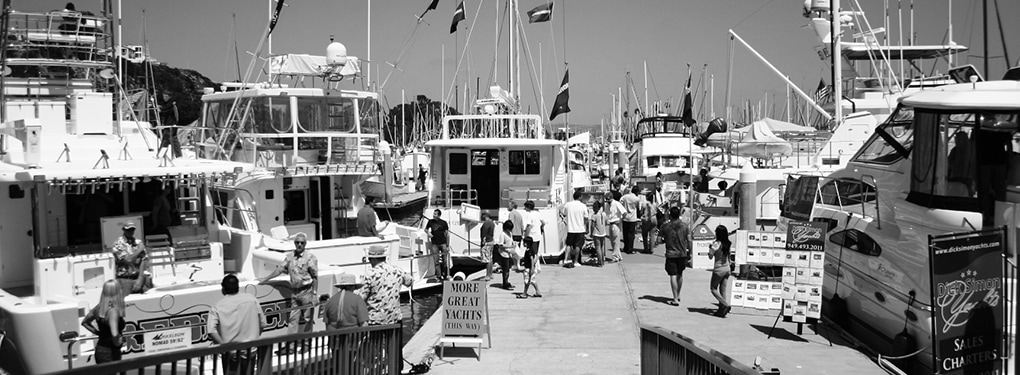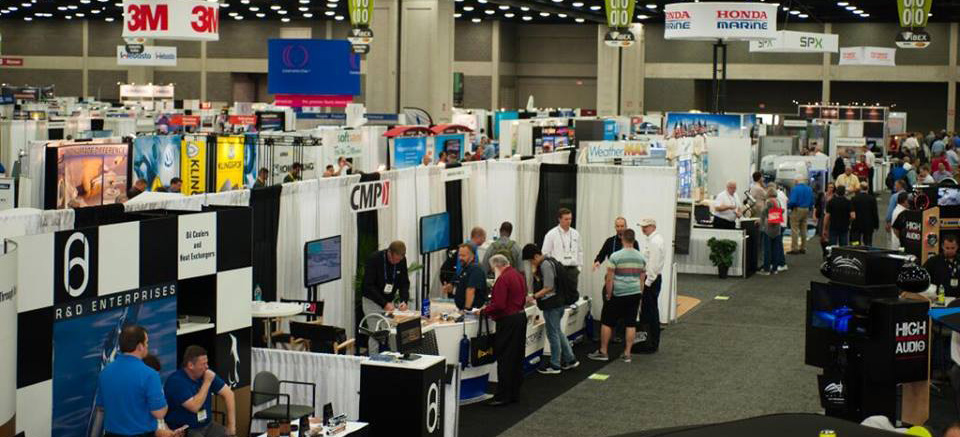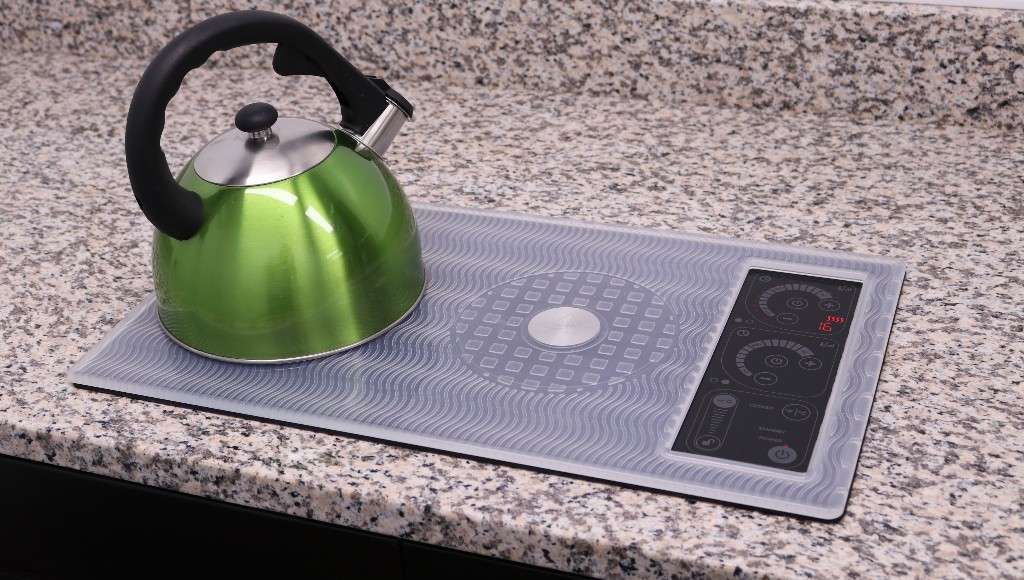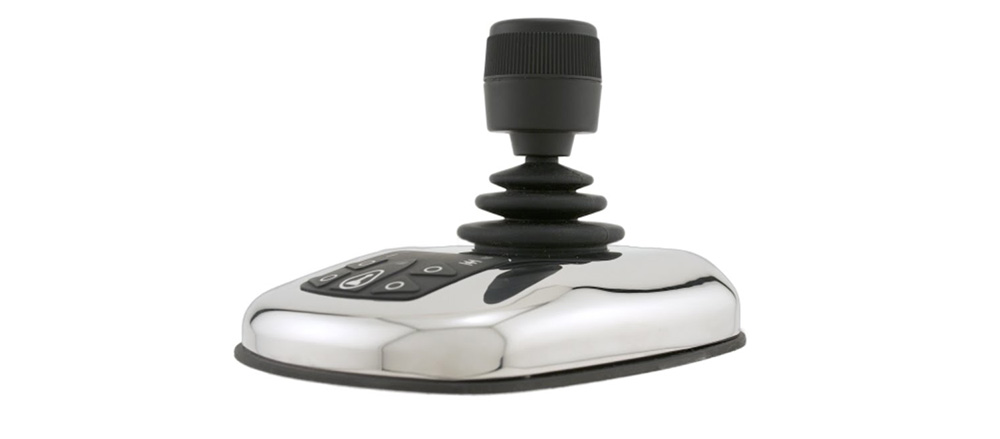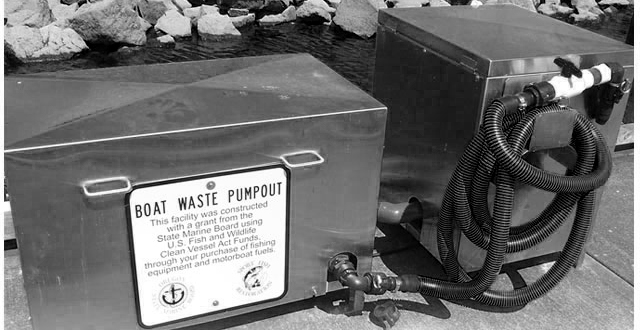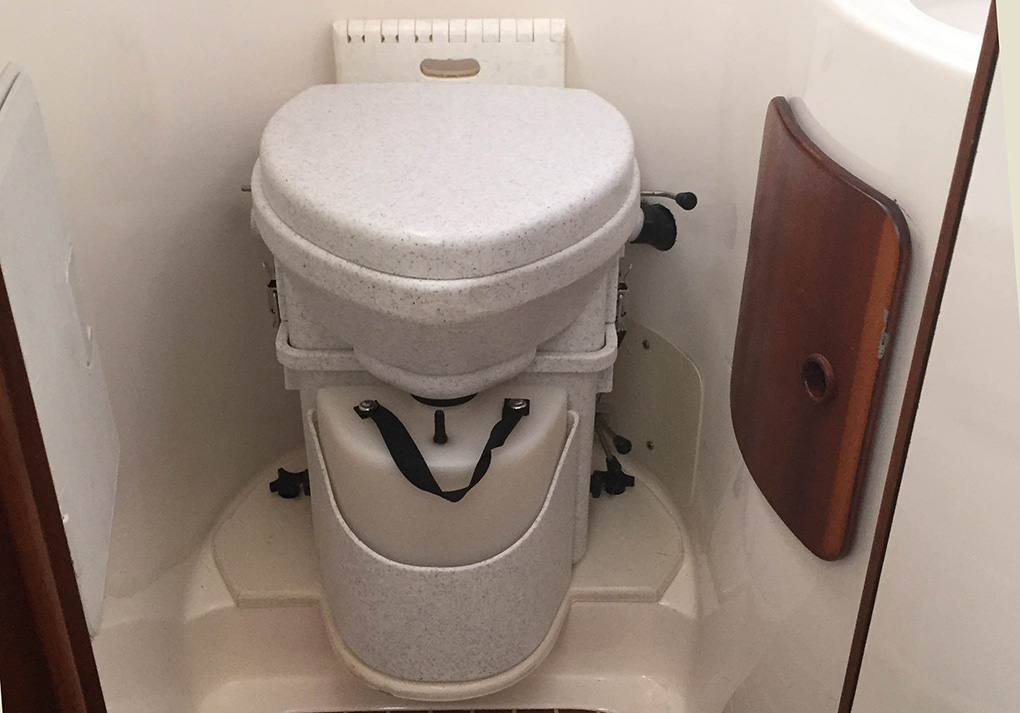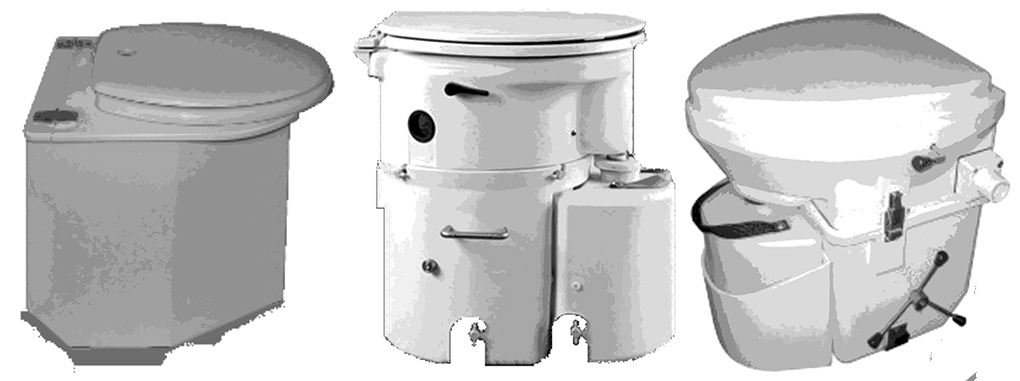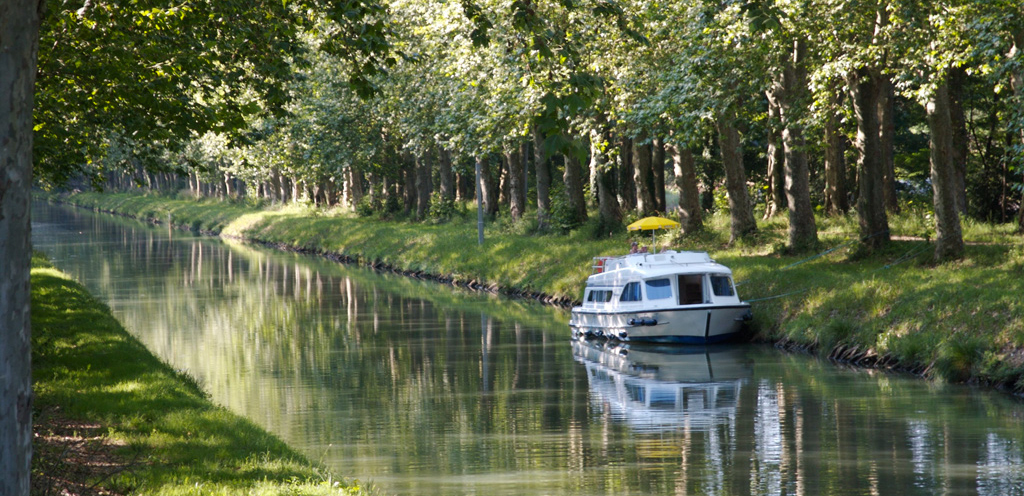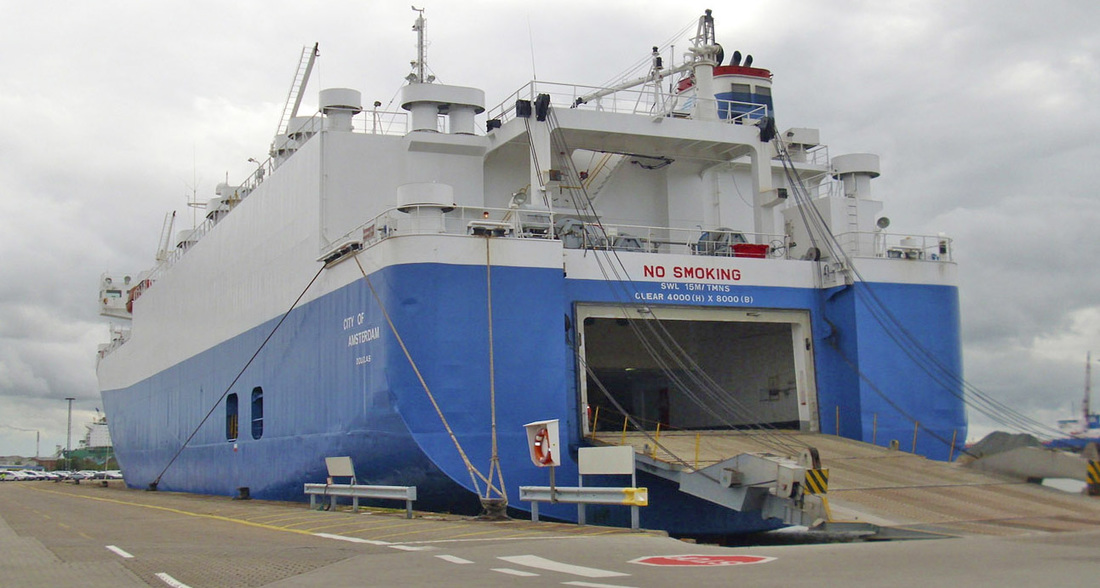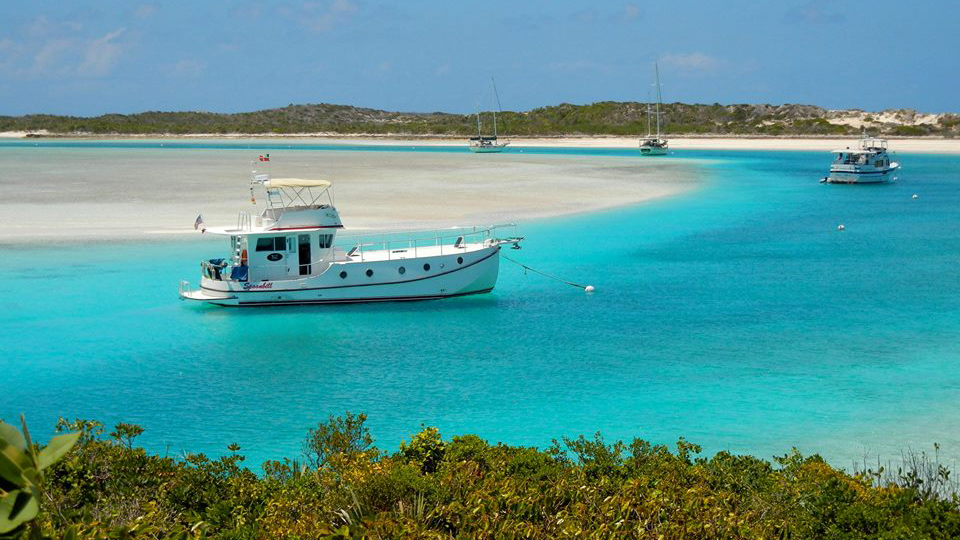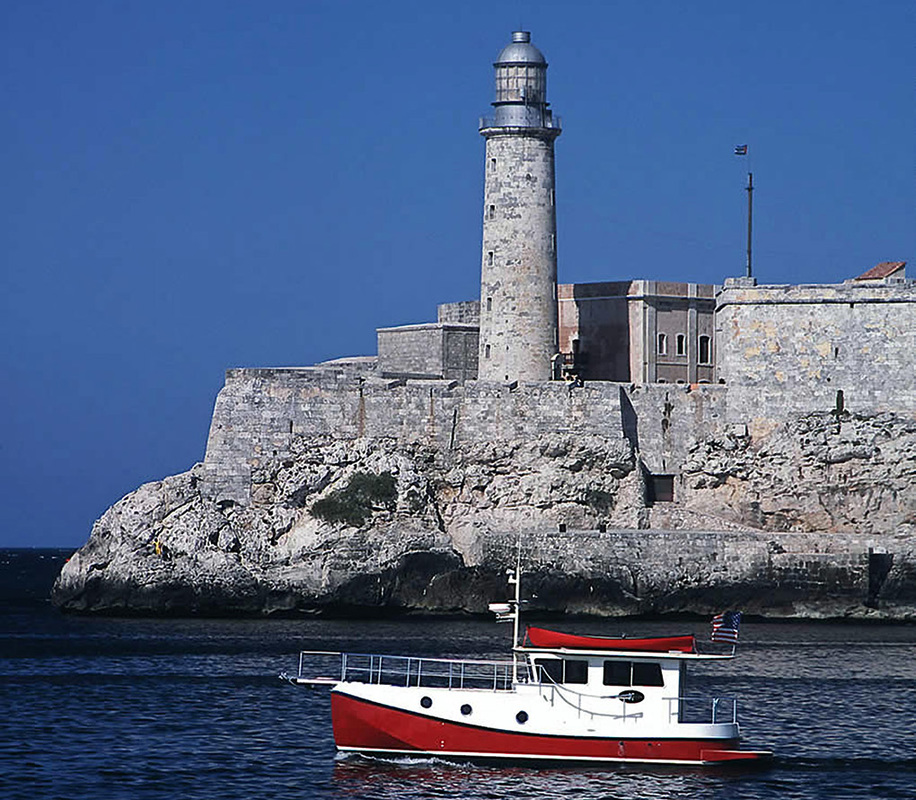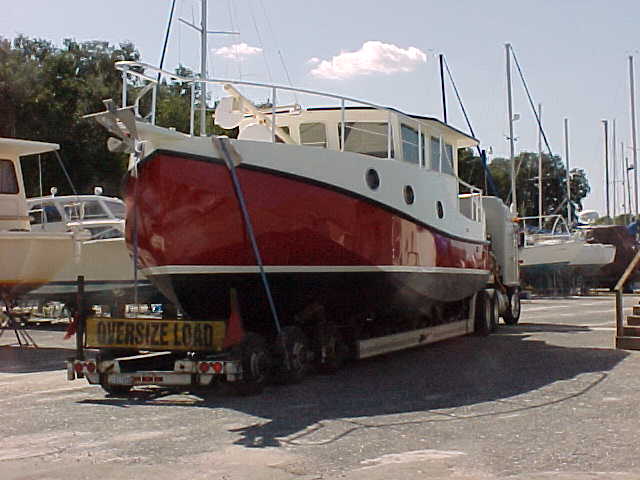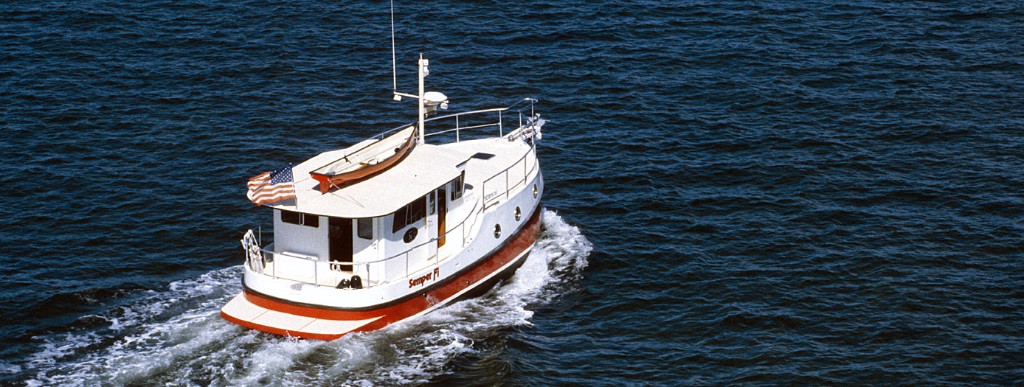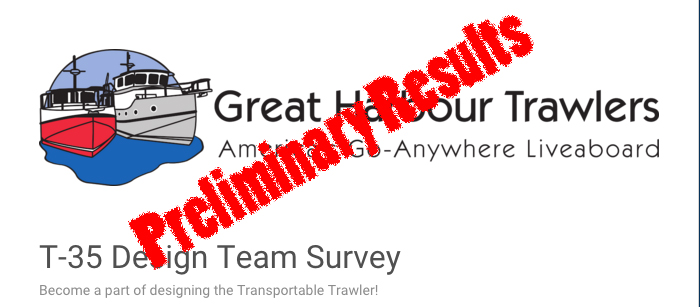|
The Great Harbour N37 is arguably the perfect expedition and cruising vessel for owners that want the ability to cruise safely and economically “off the grid” carrying with them all the comforts of home. N37s feature huge staterooms, a “home kitchen” galley, stand-up engine rooms, massive bosun’s locker, and a comfortable pilothouse with plenty of entertaining space. But as perfect as the boat may seem, some of our N37 owners have expressed the wish for a larger aft cockpit, wanting the perfect place for outdoor entertaining, alfresco dining, or just relaxing. This was the genesis for the new Great Harbour N44 concept, which we have sketched on the equivalent of a cocktail napkin above. The N44 is based on the proven 47-foot hull used in the Great Harbour GH47 and N47. But the deck and living portions of the boat are all N37--a large pilothouse/saloon with folding helm seat, double navigator bench, starboard side settee that lifts into upper and lower berths, and portside L-settee with dining table that drops to form an oversized queen berth (or optional fore and aft dinette that folds to a berth.) Below, we find a forward master stateroom with queen bed and great storage, large head with separate stall shower, second stateroom with double bed, storage and available separate washer and dryer, and a huge galley with full-size refrigerator, 4-burner cooktop, double sink, and available dishwasher and trash compactor. The N44 differences begin below decks: Located farther forwards in the hull, the engine room and bosun’s locker have more headroom, and the fuel, water, and waste tankage is all increased dramatically over that of the N37. What does this get you? Well, greatly increased range, first of all, plus the ability to stay off the grid longer. But the differences really begin to show once you exit the aft door of the pilothouse. That’s where you enter the huge 11 by 14-foot cockpit with available wing doors and canvas/isinglass, giving you the option to turn it into an all-weather entertaining area. Summer kitchen and entertainment center options further enhance the livability of this space. Improvements continue as you head aft; Instead of a bolt-on swim platform like other Great Harbours, the N44 integrates the 4 x 16-foot swim platform right into the hull itself, Euro-style. Then there is the long, wide coach roof, with space for a large center console RIB, folding deck crane, and enough solar capacity to keep you comfortable and off the grid almost indefinitely. An optional flybridge with fiberglass hardtop can be fitted as well. So move over N37. The N44 may well be the new perfect couples cruising boat. Easily handled, economical to operate, simple to maintain, storage for all your toys, and the space for almost any activity imaginable. What more could you want in a personal trawler?
20 Comments
Lithium-ion made the news when three pioneers of this battery technology were jointly awarded the Nobel Prize. And they deserved it. Without lithium-ion batteries, your smartphone would be the size of a brick, and Teslas would have a range of maybe 50 miles. As compared to older types of batteries such as lead-acid or NiCad chemistries, lithium-ion batteries pack a lot more juice into a smaller package, have a longer life, can accommodate much deeper discharges, and are faster charging.
Seems like something you'd want on your boat. Especially if weight matters. For a given amp-hour capacity, lithium-ions weigh in at less than half the heft of traditional batteries. Heavier batteries aren't a concern on our N series trawlers, as these full-displacement boats run at hull speed whether light on cargo or loaded to the scuppers. But it's a different story on the TT35, where weight reductions can further enhance efficiency in the 9 to 16 mph cruise speeds where these boats shine. And there's more. Because lithium-ion batteries can be drawn down much farther than lead acid varieties, you can get the same number of usable amp-hours from a smaller battery. Lithium batteries are lighter, last longer and aren't damaged by deep discharges After looking over currently available options, we've settled on a battery upgrade for the TT35. The current 600 amp-hour array can be replaced by a single 300 amp-hour lithium-ion battery. Because it can be discharged below 10 percent —as opposed to the recommended 50 percent for lead acids — you end up with about the same 290 usable amp hours as the lead acids. The lithium--on battery pack is much lighter, weighing in at 120 pounds as compared to over 400 for the lead acid pack. This shaves 280 pounds off the dry weight of the boat, and provides a number of additional benefits. The new batteries have about three to four times the life span of lead-acid batteries, accept faster recharge rates, and have the capacity for more rapid discharge, which is important if situations that require a strong current surge. Other noteworthy features include an integrated management system to prevent overcharging, and a 10 percent reserve feature, which protects the final 60 amps from discharge until the reserve is overridden.This feature could be a life saver, providing that final surge of power to get the engines started in a worst-case scenario. All these advantages do come at a price, and that price is around three times the cost of conventional batteries. But since lithium-ion batteries have a significantly longer service live than other battery technologies, it's not hard to justify the added cost as an up-front investment in long-term benefits. The lithium-ion battery has been added as an option for TT35 buyers, but since we would like our owners to benefit from this amazing technology, we're footing the bill for the upgrade for our next TT35 buyer. It's a great deal, but the real bonuses are weight savings, significantly greater battery capacity and years of trouble-free operation. We recently returned from the Miami Boat Show. And for once, we weren't exhibiting, just walking the docks to have a look at the latest and greatest offerings from the marine industry. While it was certainly impressive to see all that gleaming (and expensive) fiberglass and chrome, we were much more interested in investigating some new and noteworthy products that we may incorporate into our new boats. However, it also seemed like a number of builders had devoted their creative efforts to trying to deliver what I call the wow factor. As a builder, one way to stand out at a boat show—and to give your sales and marketing team some added ammunition—is to offer unique and unusual features. I'm not just talking molded-in drink holders here, but “glitzy” things like automatic retracting sun shades, over-water lounge seating that folds out from the gunwale, swim platforms that raise and lower with hydraulics, and stabilizing gyroscopes with six-figure price tags. These things may win show awards and impress shoppers, but they aren't necessarily the type of “wow” features that we incorporate into Great Harbour Trawlers.
I've spent a lifetime on the water and five decades building and repairing everything from wooden workboats to sailboats, sport fishermen and trawlers. Along the way, I've developed an appreciation for simple solutions and straightforward design. Which is not to say that I'm opposed to innovation. Anyone familiar with Mirage knows we've introduced our share of fresh ideas and ground-breaking designs. When you look at any Great Harbour, you are sure to say “wow” a number of times. But our wow factor is usually related to intelligent use of space, redundant safety features, and simple, cost-effective solutions to typical boating needs. That’s why I can’t get behind gimmicks that won't stand up to the realities of the sea, or shortcuts in materials or construction that result in problems years down the road. And that includes many of the clever and shiny add-ons that wow the crowds at boat shows. Give a lot of that hardware a few years of regular marine use and these complicated new systems tend to fail – or worse. That said, we are planning a number of innovations for the TT35. Things like a transom tailgate to dramatically increase cockpit space at anchor or dockside, an integrated solar/inverter/generator power supply, and a retracting roof-mounted dinghy arm. To make it into the final product, however, each of these ideas will have to live up to my expectations for reliability, simplicity and ease of service. Because in my mind, the real wow factor doesn't take place when the boat is at a show – or even when it is first delivered, but years down the road when the features and construction of that boat have helped fulfill the cruising dreams of the folks that purchased it. few weeks ago, we went down to Tampa to wander the aisles of the 2016 IBEX Show. This exhibition of boating equipment and boat building materials is a great place to catch up on innovative products and processes. For us, it was like being kids in a candy store. And though we ultimately had to leave a day early due to the looming approach of Hurricane Mathew, we did come away with some great ideas. Here are three that are likely to show up on the TT35. A Touch of GlassWe've long been a fan of integrated touch-screen displays at the helm. In fact, we introduced the first Glass Helm in our Great Habour line nearly 15 years ago. Our own Travis, who was age 15 at the time, created this proprietary system from a CPU, a pair of ATM-style touch screens and some smart programming and hardware that tied the various inputs together. In the years since, the major marine electronics manufacturers have caught up, and as we strolled the aisles of IBEX, it became obvious that there are now a wide range of integrated touch-screen display and control systems to choose from. For the new TT35, we've settled on a Garmin touch screen system, either the GPSMAP 7610 or 7612, which feature 10- or 12-inch screens respectively. In addition to their primary functions as advance chart plotters and sonars, with both down-looking and side-scan capabilities, the units can report and control an impressive array of onboard electronics, including radar, autopilots, engine diagnostics, entertainment systems and even wireless video cameras. The system can even be controlled via a smart phone link. You can learn more at the Garmin website, so we won't take up more space on the specifics here. The short version is that this level of integrated function is extremely space- and cost-effective, and will streamline and greatly enhance the operating experience. An Introduction to InductionLike many people, we hadn't been paying much attention to the phenomenon of induction cooking. That changed when we stopped by the Kenyon booth, were we had our eyes opened as to just how well this cooking technology could work in a marine environment. We've always put electric cooktops on our Great Harbours. Induction cooking is also electric, but with a difference. Conventional electric stoves generate heat by running electrical current through a wire that creates high levels of resistance. That resistance takes the form of heat energy, which is transferred to pots and pans through conductive transfer, It's a process that generates a lot of extra heat, much of which goes into the air rather than the food being cooked. An induction cook top substitutes the heated wire for a magnetic copper coil, which sits beneath the ceramic cooktop surface. When an electrical current is passed through this coil it creates an electromagnetic field of energy. When an iron core pan is placed on the cooktop, it is heated by the electromagnetic energy. Meanwhile, the underlying surface remains cool. As compared to a gas burner or conventional electric heating element, which are 50 to 60 percent efficient, an induction stove channels 90 percent of its energy into cooking. Energy efficiency alone might seem reason enough to opt for an induction stove, but there's more. Having a cook top that remains cool to the touch can be a major safety factor in the galley of a moving boat. It's also easier to clean, because anything spilled on the cool surface won't get baked on. And then there's the mat. Turns out you can place a soft silicon mat right over the ceramic surface of an induction cooker during operation. This mat provides enough surface friction to keep pans stable at tilt angles as high as 45 degrees. It also removes easily for fast cleaning. Our one concern with induction cooking was the need for special pans. But it turns out that quite a few companies make induction-ready pans, and there's a chance that some already in your pantry will work. If not, you can add a simple, griddle-like induction element under your favorite pot, and it will do the heating. We're pretty excited about the possibilities of this technology, and once we have one aboard and have made a few pots of gumbo or boiled some shrimp, we'll let you know how things worked out. Adding Joy to the StickAt the show's in-water display, the big news was the joystick control systems that have migrated to outboards. It was pretty amazing to watch a quad-engine center console slide in and out of a slip by pivoting and shifting pairs of outboard in independent directions. But is that something that would ever make sense on our TT35? The answer is maybe.
We are confident that this boat will be easy to maneuver with throttles alone. The twin outboards sit all the way outboard, well beyond the usual dual-outboard pairings, and also wider than the typical twin inboard. This should provide significant twisting thrust when engines are cross controlled, allowing the helmsman to spin and maneuver with a high degree of precision. That being said, we've already had some requests for bow thrusters. We're hesitant to tack that feature on to the base price, but we are looking at systems that will combine reliability and performance with reasonable cost, and when we settle on a design, it will likely be offered as an option. Once you opt for a bow thruster, the next step up the convenience ladder would be an integrated joystick controller that links the outboards and thruster with fly-by-wire software that allows the operate to maneuver around the dock with surgical precision. It's too early in the process to put an exact number on the cost of such a system, but again, it would be offered as an option for owners who felt the convenience justified the cost. The Straight Poop on Composting Toilets There are many delightful aspects of cruising. Holding tanks are not among them. Like it or not, the periodic pump out is the price paid for freedom from shoreside utilities. So too is the realization that some day, things could go wrong in a very smelly fashion, requiring the repair or replacement of odiferous fittings. During some early brainstorming sessions on the TT35, we wondered if there might be an alternative solution to onboard waste management. That's when we started looking at composting toilets. Self contained, self-composting marine heads have been around for a number of years, and they have caught on with a subset of cruising sailors. Reports and reviews from online forums and chat rooms seemed largely positive, and when we put out an online survey on design options for the TT35, nearly half of the 600-plus respondents indicated potential interest in a composting system. Encouraged but still unconvinced, we wanted more verification from cruisers who had actually used similar systems in powerboats. This lead us to a pair of cruisers who own MC 30 power catamarans. These Polish-built pocket cruisers are trailerable, and were originally equipped with conventional marine heads. Both Tom Rogers and Bob Cantell replaced these systems with composting heads. “I had an electric head and a 22 gallon holding tank,” Bob recalls, “There were a lot of causes for failure, and it wouldn't work when the boat was on a trailer. With people living aboard the tank would fill in four days. No more island sitting for us, we needed to find a marina to pump out.” Manufacturer's literature states that a composting head will provide a month's capacity for two people before the need to empty the composted solids. Bob's real-world experiences are similar. “There is no stink, and the composting toilet has a capacity that really negates concerns about when we empty,” he says, “By eliminating the holding tank, we gained a lot of storage space.” Tom Rogers replaced his conventional marine head some ten years ago, and has cruised the Great Lakes and Florida with a composting system ever since. “We cruise for up to ten months a year, but are intermittent users,” he says. “We spend a good portion of our time at marinas because we cruise with a dog, and we take advantage of shore facilities whenever possible. But having the composting system is a real convenience for those times when it is needed.” While some composting systems incinerate solid wastes, Tom opted for a simpler system with minimal power demands. “It has a small ventilation fan with a milliamp draw, but even at times when the fan became disconnected, we didn't notice an odor.” One key to odor-free operation, both men feel, is the separation of liquids and solids. “The chemistry experiment of mixing seems to be the cause of the stink in a conventional system,” Bob says. The three primary manufacturers of marine composting toilets all incorporate designs that divert urine to a separate receptacle from the sold waste chamber. Urine chambers are removable for emptying. Tom says the addition of a dishwasher rinse additive keeps urine containers free of buildup and odors. Bob equates the periodic emptying of the solids chamber to changing a cat litter box.
“We just tip the solids into a trash bag and dispose of it ashore.” Tom says, “If you leave the solids in the chamber long enough, it actually becomes garden-ready compost. We usually empty the chamber sooner than that, but what we're removing is definitely not just a bucket of s**t, and is appropriate for municipal trash and land fills.” The system needs less cleaning that one might initially expect, Tom says. He spritzes the bowl after use with a commercially available biodegrading enzyme solution to keep things tidy, while also giving a boost to the digestion process. Decomposition typically takes three to five days in climates above 60 degrees says he says. “The one thing that will really increase capacity and speed digestion is excluding paper from the chamber, he says. Some cruisers already do this with their holding tanks, but it's the biggest change those who don't might want to make.” Aside from the periodic emptying, there is little to no maintenance involved in a composting system, Tom says. “And if something did fail, you could remove the entire unit and have it on deck in five minutes with no plumbing parts to deal with.” Based on feedback such as this, we're taking a serious look at composting systems as a viable solution aboard the TT35. Of course, we will also offer the highly-reliable traditional marine heads that been a feature of our GH and N series models for nearly two decades. This will give owners the option to hold and pump or compost and dump, based on their personal sensibilities and cruising habits. Where will you go? We asked this question to potential buyers of the TT35, and so far some 400 have shared their cruising bucket list. Most rosters include familiar favorites such as Florida, the Bahamas, Great Lakes, Down East, the Pacific Northwest and of course, the Great Loop. Many plan to take advantage of the boat's trailerable capabilities for cost- and time-effective moves between prime cruising grounds, which is exactly what we hand in mind when we began this project. Less expected were the number of respondents who also included more distant destinations such as Europe and even the Far East Traditionally, travel to such far-flung ports of call has remained the purview of adventurous bluewater sailors and a small percentage of those who purchase long-range motoryachts. Let's face it, long ocean voyages are not for everyone, and aside from bragging rights, the joys of ocean crossings are often outweighed by the discomfort and tedium. For most, it's the destination that is the reward, and that's where the TT35 could become an unexpected game changer in the cruising arena. This point was driven home a few weeks ago when a customer stopped by the yard to discuss particulars on a TT35 build. One of his goals is to cruise the Croatian Islands. He's done the research, and is confident he can ship his TT35 to the Adriatic Sea for around $3,000 aboard a RORO ship. For those not familiar with the overseas shipping trade, RORO stands for roll-on, roll off. These vessels are essentially ocean going car ferries, and many can accommodate larger vehicles as well as boats on a trailer. Shipping a boat such as the TT35 aboard a RORO ship is a far simpler and more cost-effective process than hoisting a cruiser onto a freighter deck, or blocking and bracing it aboard a dry dock ship. The TT35 would roll right up the ramp with no risk of damage from cranes or deckhands, and make the passage within the ship's weather-protected hold. In anticipation of some memorable cruises on the French waterways, we're contemplating sending a TT35 across the pond for personal enjoyment. The continent's canal system provides intimate access to sites and sights outside the usual terrestrial tour routes. Historic village wharfs where cargo barges once offloaded now welcome pleasure cruisers, who come ashore to stroll cobblestone streets, procure fresh produce on market day, and sample local vintages at sidewalk cafes. Small wonder that canal boats are a favorite with European holiday makers. But unlike slow, barge-like canal boats, which are confined to sheltered waterways, the TT35 is also well suited for plying the continent's majestic river systems, and voyages into the open waters of the Mediterranean, Aegean. Adriatic, Baltic and beyond. Because RORO ships visit ports around the world, the TT35 might be poised to introduce a new type of power cruising. Few of us have the time or temperament to cross oceans in a small boat, but many would like to visit the planet's many wonderful cruising grounds—provided we could arrive in an expeditious and relatively economic manner. For those with a taste for adventure, the ease with which the TT35 can be moved across oceans will certainly open up new horizons and pave the way for some amazing adventures.
The plight of Samuel Coleridge's ancient mariner is shared by many a skipper. Onboard water conservation can be critical to those who cruise to remote destinations for extended periods. But it also matters to any captain who disconnects the dockside hose bib while carrying crew members inclined to overly-long showers. And so, for most any boat smaller than a cruise ship, water management matters. So how much onboard water is enough? A human can survive on a bit more than a quart of water a day, but the average American landlubber uses up to 100 gallons every 24 hours. Clearly, we shouldn't bring these thirsty habits aboard, but we also don't want to evoke aquatic austerity measures that present challenges to personal comfort and hygiene. A survey of various blogs and forums reveals that some water-frugal sailors get by on as little as two to three gallons per person, per day. Of course, such routines usually involve saltwater supplies for sinks and toilets, cursory or sporadic personal rinses and deck washdowns only when rain showers arrive. A more realistic number for those who enjoy reasonable showers, the odor-free advantages of a freshwater-flushing toilet and some regular hand washing would likely be closer to 15 or 20 gallons daily per passenger. Great Harbour owners don't typically need to engage in draconian water rationing, as their N and GH series trawlers carry anywhere from 300 to 600 gallons of water—plenty for a week or more away from a water hose. At eight pounds per gallon, filling these onboard tanks adds 2,400 to 4,800 pounds to the boat's total displacement. Fortunately, that extra weight isn't really felt when traveling at the 7 or 8 knot hull speeds these boats provide. The same won't hold true for our new TT35, which is designed to deliver exemplary fuel efficiency when operating in the 12 to 15 knot range. Weight control is key to obtaining this performance, and at these higher, lift-generating speeds, carrying a literal ton of water would result in a noticeable decrease in performance. We will fit the TT35 with sufficient capacity to get a water-conscious family of four through a long weekend, or sustain a couple for a week or more. For those seeking extended self sufficiency, we are also working on a system that will provide virtually unlimited freshwater supplies without the need to install large tanks. Onboard watermakers are nothing new, and most mariners familiar with these systems develop a sort of love-hate relationship. On the one hand, the ability to create a steady supply of fresh water is extremely liberating. But these systems don't come cheap, and repairs and replacement parts can be equally costly, and sometimes difficult to obtain. This complexity and expense isn't due to the basic technology involved—which is actually fairly straightforward—but to the use of proprietary parts and complex add ons.
To provide the TT35 with the pleasures of a watermaker without the pain, we are now working on an “open source” design that employs readily-available industrial parts and fittings. In addition to cost savings, this will result in a system that is much easier to maintain and repair. This device many not sport all the bells, whistles and chrome-plated knobs of the name brands, but it will provide plenty of pure, fresh water reliably and cost effectively. And that's exactly what's needed when you are hanging at a favorite anchorage far from civilization, with no plans to return anytime soon. Time Travels |
By Ken FickettKen is the founder of Mirage Manufacturing, Archives
January 2020
Categories |
- Home
- About
-
Boats
- Great Design
- Construction
-
Trawler Times
-
News
>
- California Humpbacks Perform Rare 'Triple Breach' (Video)
- Betrayal in Georgia? Anchoring Rules Appear Worse Than Ever
- Ga. Wreck Removal Delayed Again: Anchor SNAFU
- Chesapeake's Tangier Island: Enjoy it While You Can
- Robert Peek, Beloved Deep Creek Lockmaster, Has Died
- U.S. Agency Warns of GPS Interference
- Rudy and Jill's ICW Tips
- A TT35 Day at the Sausage Factory
- Cat or Monohull Sailboat Versus a Trawler (Images, Long)
- Loopers Warned To Linger Post-Sally
- Coast Guard Shallow Draft Navigation Survey
- Forget Lithium for a Moment: Why Old-Fashioned Batteries Explode
- Tracking Hurricane Laura Live (Streaming Video)
- The Downsides of Cruising (Comprehensive)
- Circumnavigator Who Eschewed Instruments Dies at 104
- Maritime Liens: Don't Let Your Boat Get 'Arrested'
- Gulf Stream Is Slowing Down
- Attention Cruisers, Perseids Meteor Shower Peaks Next Week
- Ladies Publish Great Loop Tell-All
- New NOAA Model Forecasts Another Sahara Dust Cloud Arriving This Week (Animation)
- TT35 Demonstrations Set for Next Week
- Prep for a Busy Hurricane Season
- It's a Marina! It's a Mooring! No, It's a French Design (Video)
- Giant Floating Chain Saw To Rip Up Wrecked Car Carrier off ICW
- Lock Sked Final: Great Loop Doable, But...
- Georgia Caves, Defangs Draconian Anchoring Law
- Heads Up, Boaters: Here Comes the Red Dust from Africa
- Bahamas Changes It's Mind: Keeps Covid Test Requirement
- Insurance? Tell All or Risk Claim Denial
- Gulf 'Dead Zone' Bigger Than Connecticut
- GPS Spoofing Mystery: AIS Crop Circles & Ghost Ships
- Yanmar To Install Fuel Cell Propulsion in Boats
- Bahamas To Boaters: Welcome Back, Wear a Mask
- Covid Concerns Fuel Coast Guard Retention Drive
- Birthday Gift for Her 70th, a TT35
- Above Average Hurricane Season Forecast
- Foreign Boaters Get Some Relief as Restrictions Eased
- Catalina Island Reopened for Arriving Boats
- When a Boat Isn't: Supreme Court Decides
- Coast Guard Adopting 'i911' for Your Location
- Makeover: Storm Early Warning System Explained (Video)
- The Reality of Quarantine in Paradise
- 92-Footer Sinks Off California
- New York to Loopers: You May Be Out of Luck
- Badass Origins of Boating Law
- Can Cannabis Save Florida Waterways?
- Tale of a Terrible Boat
- Boating and Social Distancing (Video)
- Powering Through a Mexican Gale
- Bahamas Says Stay Away, Get Out
- Composting Heads Are a Good Option
- TT35 Ad Campaign: The Un-Tug
- Coronavirus Song: 'Drone Shot of My Yacht'
- Smuggler's Run: Florida's Own 'Mini-Loop'
- Virtual Tours of Old Ironsides
- BoatUS to Gulfport, Don't Break Law
- Luperon's Swimming Robber or Maybe Not
- Georgia Begins Undoing Anchoring Ban
- Gulfport Joins the War Against Cruisers
- Video on D.R. Consulting Gig
- Reward Increased in Hunt for Dolphin Killer
- Our Favorite Fugitive Arrives in Mexico
- Humungous Crane To Slice Up Wrecked Car Carrier
- Avoid Getting Screwed by Georgia; Just Go Around
- Radar Detects 'Fowl' Weather in Keys
- Old Abe the Naval Architect
- $20,000 Reward in Dolphin Killings
- Great Lakes Search for Sunken Planes
- Great Harbour Advises D.R. Boatbuilder
- Despite Sewage Apocalypse, Mayor Blames Boaters
- Loopers Will Need NY Certificates
- Dorian Dog Story 'Spiked'
- $209,000 for 61-Foot Hatteras MY
- Refloating Effort Progress
- Free Bahamas Cruising Guide
- New Florida Anchoring Bans
- Propane Fire
- Psychedelic Fibers Advance Knot Theory (Video)
- Wanted on the Waterways 1/4/2020
- Ken Fickett's Blogs
- Cruising in the Time of Covid: Think Outside The Loop
-
News
>
- Owners

